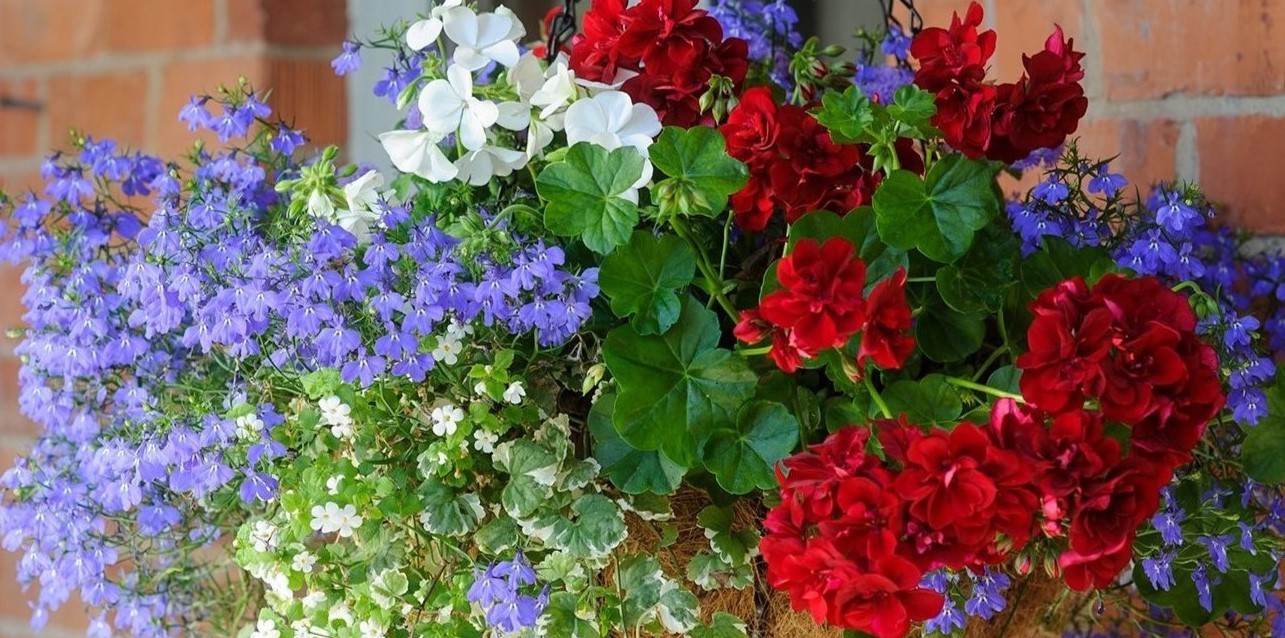
When it comes to vibrant and eye-catching flowers, lobelia is a top contender. Known for its stunning blue, purple, and sometimes white blooms, this plant has captured the hearts of gardeners and plant enthusiasts alike. But did you know that lobelia holds a variety of surprising facts that make it even more fascinating? From its medicinal properties to its ability to attract beneficial pollinators, lobelia has much more to offer than just its beauty. In this article, we will explore nine intriguing facts about lobelia that will deepen your appreciation for this remarkable plant. Get ready to be amazed by the hidden wonders of lobelia!
Key Takeaways:
- Lobelia is not just a pretty flower – it’s a diverse genus of plants with rich medicinal history, vibrant colors, and the ability to attract pollinators. It’s easy to grow but can be toxic if ingested, so handle with care!
- Whether you’re a gardening pro or just starting out, lobelia is a versatile and low-maintenance plant that adds a pop of color to your landscape. It can be used as ground cover, natural dye, and attracts pollinators. Just be cautious of its toxicity!
Lobelia is not just a flower.
Most people associate lobelia with the small, delicate flowers that come in various shades of blue, but lobelia is actually a diverse genus of flowering plants that includes both annuals and perennials. These plants can range from low-growing ground covers to tall, upright specimens.
Lobelia has a rich history of medicinal use.
For centuries, lobelia has been used for its medicinal properties. Native American tribes often used lobelia to treat respiratory conditions like asthma and bronchitis. Its active compounds have shown potential in helping to relax the airways and relieve coughing. However, it is important to note that lobelia should be used under the guidance of a healthcare professional.
Lobelia attracts pollinators.
The vibrant flowers of lobelia are known to attract pollinators such as bees, butterflies, and hummingbirds. The tubular shape of the flowers and their nectar-rich reward make them particularly appealing to these creatures, aiding in the pollination process and supporting the overall health of the ecosystem.
Lobelia comes in a variety of colors.
While blue is the most common color associated with lobelia, there are also varieties that feature flowers in shades of pink, purple, white, and even fiery red. This diverse color palette makes lobelia a versatile choice for adding visual interest to gardens, containers, and hanging baskets.
Lobelia is easy to grow.
Whether you’re a seasoned gardener or just starting out, lobelia is a great choice for adding a pop of color to your landscape. These plants are relatively low-maintenance and can thrive in both sun and partial shade. With regular watering and well-drained soil, lobelia can reward you with a vibrant display of flowers throughout the growing season.
Lobelia can be an effective ground cover.
Certain varieties of lobelia, such as Lobelia erinus, are well-suited for use as ground covers. These low-growing plants spread quickly, forming a dense carpet of foliage and flowers. They can help suppress weed growth and add a splash of color to areas that are difficult to maintain.
Lobelia is not tolerant of extreme heat.
While lobelia thrives in cooler climates, it can struggle in regions with intense heat. High temperatures can cause the plants to wilt and decline. To protect your lobelia from excessive heat, consider planting them in a location that receives partial shade during the hottest part of the day.
Lobelia can be used as a natural dye.
The flowers of lobelia, especially those with deep blue or purple hues, can be used to create natural dyes. These dyes can be applied to fabrics or used in various crafts to add a unique and eco-friendly touch. Experimenting with the natural dyes derived from lobelia can be a fun and creative project.
Lobelia can be toxic if ingested.
While lobelia has its medicinal uses, it is important to handle this plant with care. Ingesting large amounts of lobelia can be toxic and may cause symptoms such as nausea, vomiting, and dizziness. If you have pets or small children, it is advisable to keep lobelia out of their reach.
Conclusion
Lobelia is truly a fascinating plant, with its vibrant colors and impressive medicinal properties. From its historical uses to its stunning floral displays, there is much to discover about this versatile plant. Whether you’re an avid gardener or simply appreciate the beauty of nature, adding lobelia to your garden or herbal medicine cabinet is definitely worth considering. So why not explore the world of lobelia and unlock its wonderful benefits? Happy gardening!
FAQs
Q: Can I grow lobelia in containers?
A: Yes, lobelia is an excellent choice for container gardening. It thrives in pots, hanging baskets, and window boxes, adding a burst of color to any space.
Q: Is lobelia safe for consumption?
A: While lobelia has medicinal uses, it is important to note that this plant contains toxic alkaloids. It should only be used under the guidance of a qualified herbalist or healthcare professional.
Q: How often should I water lobelia plants?
A: Lobelia prefers moist soil, so it is important to water it regularly. Aim to keep the soil evenly moist, but avoid overwatering as it can lead to root rot.
Q: Can lobelia tolerate full sun?
A: Lobelia thrives in partial shade to full sun, but it is best to provide some shade during the hottest part of the day in warmer climates.
Q: When is the best time to plant lobelia seeds?
A: Lobelia seeds can be sown indoors 10-12 weeks before the last frost date or directly outdoors after the threat of frost has passed.
Q: Do lobelia attract pollinators to the garden?
A: Yes, lobelia’s vibrant flowers are known to attract bees, butterflies, and hummingbirds to the garden, making it a great choice for pollinator-friendly landscapes.
Q: How tall do lobelia plants grow?
A: The height of lobelia plants can vary depending on the species, but on average, they grow to be around 6-12 inches tall.
Q: Can lobelia be propagated from cuttings?
A: Yes, lobelia can be propagated from stem cuttings. Simply take a 2-3 inch cutting from a healthy plant and root it in moist soil or water.
Q: Are there different varieties of lobelia?
A: Yes, lobelia comes in various species and cultivars, offering a range of colors, growth habits, and flower forms to suit different garden preferences.
Lobelia's alluring qualities don't stop with these nine surprising facts. Dive deeper into lobelia's captivating world by exploring eight more intriguing tidbits about this versatile plant. For a vibrant splash of red in your garden, learn about the cardinal flower's fascinating characteristics and uncover 18 little-known facts that will make you appreciate this stunning bloom even more. Still craving more lobelia knowledge? Satisfy your curiosity with 20 additional surprising facts about the cardinal flower, guaranteed to leave you marveling at nature's incredible creations.
Was this page helpful?
Our commitment to delivering trustworthy and engaging content is at the heart of what we do. Each fact on our site is contributed by real users like you, bringing a wealth of diverse insights and information. To ensure the highest standards of accuracy and reliability, our dedicated editors meticulously review each submission. This process guarantees that the facts we share are not only fascinating but also credible. Trust in our commitment to quality and authenticity as you explore and learn with us.


